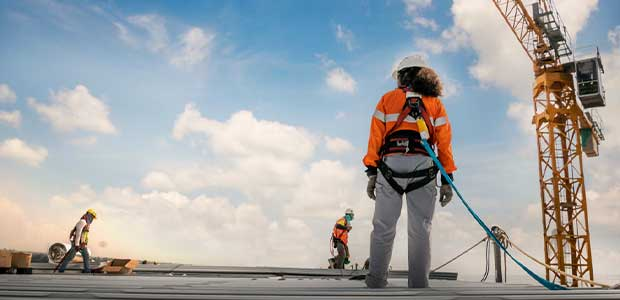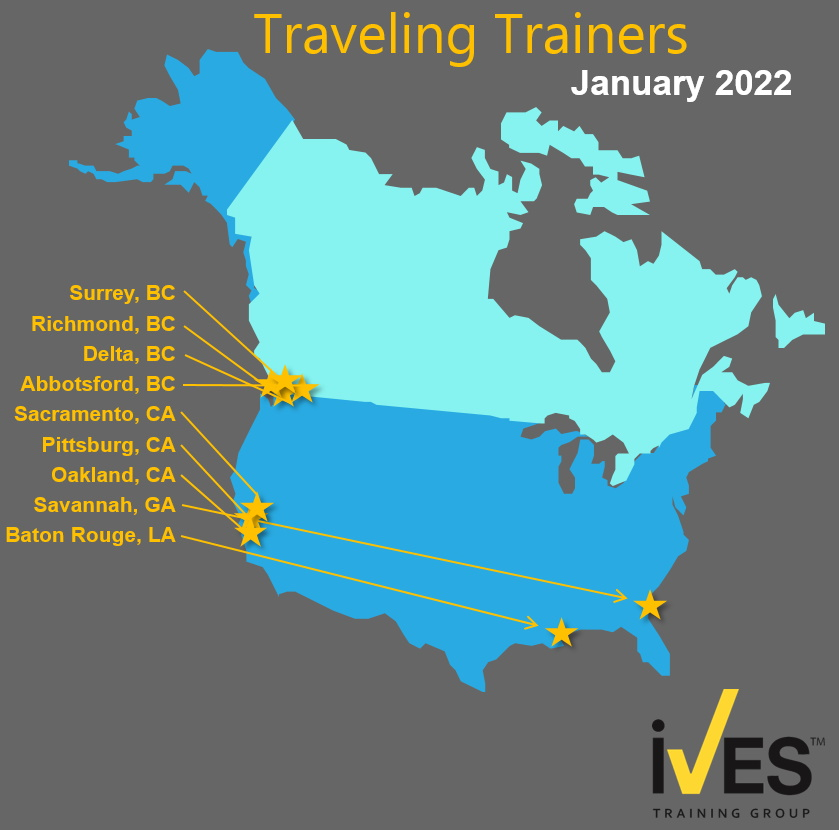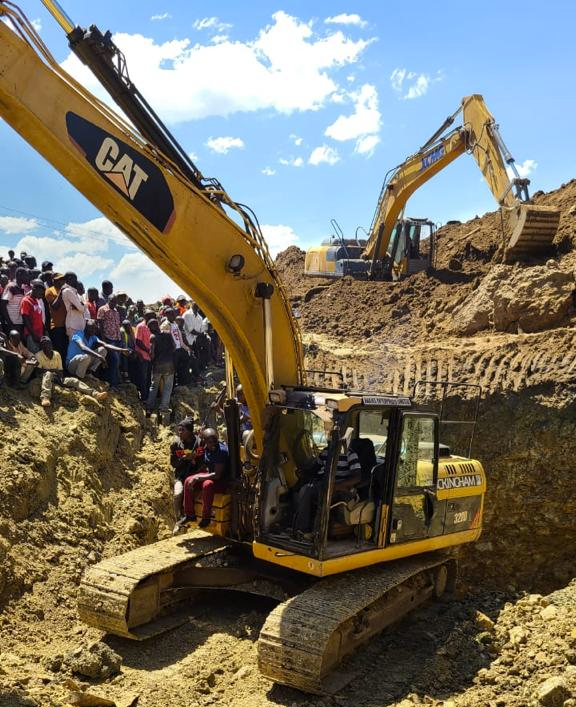
A fall incident can be a confusing and frightening
event on a job site, so it is wise to have a rescue response plan
carefully constructed in a clearheaded moment beforehand.
Fatalities
caused by falls continue to be a leading cause of death for
construction employees. Preventing falls is always best, of course, and
having fall protection in place is an excellent preventative measure,
but it is not enough—just as installing a smoke detector isn’t enough
to prepare your team in case of fire.
You
need a plan of action for your crews to follow in the event of a fall.
Creating a thorough fall rescue plan arms your workers with the
knowledge and processes they need to follow in an emergency to
prevent serious injury or death.
The Importance of a Swift Rescue Response
In
the event of a fall, even after the fall is arrested, the worker is not
yet out of danger. A rapid rescue is essential for preventing secondary
injuries, and even death, that can occur in a fall incident, even after
the danger of a direct falling injury has passed.
Fall
protection harnesses are designed to arrest a fall but not for
prolonged suspension. The straps and buckles that absorb the force of a
fall can begin to cut off blood circulation if the worker remains
suspended for more than a few minutes. While the worker remains
suspended in a fall protection harness, his or her circulation is
restricted, which can lead to a condition known as suspension trauma.
Suspension
trauma, also called orthostatic intolerance or harness hang syndrome,
is caused by the disruption of blood flow. The loss of circulation can
lead to nausea, a drop in blood pressure, loss of consciousness and the
onset of circulatory shock. Uncirculated blood that pools in the legs
lacks oxygen from the lungs, which raises the acidity of the blood. This
acidic blood can shock the liver, kidneys and heart once circulation is
restored.
OSHA requires
fall protection plans to include plans for a prompt rescue due to the
risk of suspension trauma. In a technical bulletin, OSHA states
suspension trauma can be fatal within 30 minutes and that dangerous
effects of suspension trauma can occur within as little as three to five
minutes of the fall. When it comes to fall rescue, speed is of the
essence. Calling the local fire department and waiting for rescue to
arrive is not a good option. Having a carefully thought-out rescue plan
can save precious minutes, which can translate to saving lives.
Components of a Rescue Plan
Your rescue plan should include all the information your team would need to access immediately in the event of a fall.
The
first element to include in your fall rescue plan is a list of the
names and contact information of authorized rescuers and first-aid
trained employees. These will be the people called upon to respond to a
fall incident to execute a swift rescue and, if necessary, tend to the
fall victim. Only trained personnel should attempt a rescue retrieval in
dangerous circumstances or provide first aid, so having a readily
accessible list of employees qualified to help is key to providing
timely rescue.
Next,
provide employees with a complete on-site fall response
checklist. Clearly and methodically think through the steps employees
should follow in an emergency beforehand to provide your team with a
simple checklist. This checklist will prompt any employee, regardless of
their experience level or training, to run through the basic responses
to a fall without forgetting an important step in the heat of the
moment. Items to include on the checklist might include questions or
prompts such as:
- “Can the victim be pulled to safety to avoid hanging suspended?”
- “Is
the worker’s harness equipped with trauma straps or attached to a
self-retracting lifeline (SRL)?” *“Do rescuers have access to a rescue
ladder or lift?”
- “Have emergency services been called?”
Next,
your rescue plan should include the location of all pertinent emergency
supplies. This should include the location of rescue equipment
(detailed below), first aid kits, defibrillators and telephones to call
for help. Although the location of these items can seem obvious in the
abstract, an accident can create confusion or even panic in the moment.
Again, seconds matter when responding to a fall, so spelling out the
location of these important items can save precious time.
You
should also include a list of emergency phone numbers that should be
used in the event of an incident, including the supervisors or safety
managers who should be notified, the nearest medical facilities,
emergency services (9-1-1 and local police and fire departments) and
OSHA.
Your plan should
also provide guidance on how to assess the situation once the fallen
worker and all rescuers are returned to safe ground. If the victim may
have sustained an internal injury, lost consciousness at any time during
the incident, or remained suspended for more than a few minutes, they
should be taken to the nearest hospital or medical facility for
evaluation.
Rescue Equipment
Depending on the situation, you might employ one or more types of rescue equipment to help a fallen worker in suspension.
Trauma
straps. Trauma straps are emergency PPE coiled into pouches attached
to a harness at the hips. When hanging suspended and awaiting
rescue, a fallen worker can deploy the trauma straps by uncoiling them,
hooking them together, and standing on them like a bridge until help
arrives. This engages the worker’s leg muscles to encourage more normal
blood flow and takes the weight off the harness that could otherwise cut
off circulation.
Self-rescue
ladders. A self-rescue ladder is portable rope or nylon ladder housed
in a pouch that attaches to an anchor point and to the worker’s harness.
If equipped in advance, a self-rescue ladder
deploys automatically during a fall, allowing the victim to simply climb
the ladder to safety. Even if not equipped in advance, a rescue ladder
can be deployed from the original anchor point or a temporary anchor
point within reach.
Rescue
harnesses. Rescue harnesses include handles on the shoulders that allow
nearby workers to hoist a fallen worker back onto safe footing.
This should only be attempted for short fall distances where workers can
safely reach the victim without putting themselves at risk of falling
as well.
Recovery
SRLs. Self-retracting lifelines (SRLs) are best known as personal fall
protection devices that serve a similar function to shock-absorbing
lanyards. Recovery SRLs allow a rescuer to hoist a fall victim to safety
with the help of an inbuilt winch mechanism.
Aerial work platforms. A
personnel lift such as a bucket truck, boom lift or scissor lift can be
used to retrieve a fallen worker if one is available on site and can
safely reach the fallen worker’s height. Only use personnel lifts or
rescue baskets intended to hold workers aloft; do not attempt to rescue
workers using other construction equipment or vehicles.
Reporting an Incident to OSHA
Any
fall should be treated as a serious safety incident, even if no
injuries occurred. Any fall incident that results in a worker losing
consciousness, requiring medical treatment beyond first aid, or missing
work (including restrictions on their ability to work) is considered a
recordable incident, according to OSHA. You must report these incidents
to OSHA by law. You can use the follow forms to report a fall incident
to OSHA:
- OSHA Form 300 (Log of Work-Related Injuries and Illnesses)
- OSHA Form 300A (Summary of Work-Related Injuries and Illnesses)
- OSHA Form 301 (Injuries and Illnesses Incident Report)
All three forms can be downloaded from OSHA’s website. Record as many details of the incident as possible.
Following
a reported incident, OSHA may conduct an inspection. If inspectors
arrive, you must comply with their requests for documentation and
information. A company representative has a right to be present and
accompany all walkaround inspections. Following the walkaround, the OSHA
inspector will discuss any observed
violations. You can ask them questions about standards being cited and
about the severity or penalties, but do not argue or try to
negotiate. Ask them to send your company a record of any citations. Keep
good notes and take photos and measurements during or immediately after
the inspection. Correct any unsafe conditions the
inspection revealed as quickly as possible.
We
all hope to avoid workplace accidents and do what we can to prevent
falls. With any luck, you won’t ever need to employ your rescue plan.
But it is far better to have a plan and not need it than to need a plan
and not have it.
Note:
For helpful information and downloadable resources on rescue planning,
check out the MEWP Support Documents & Videos in the Downloadable
Materials and Updates section of the IVES website



 Hi Bob!
Hi Bob!
 "Great training program! Recommend for everyone thinking about
becoming a trainer." Steven, Premium Forklift Train the Trainer Program
"Great training program! Recommend for everyone thinking about
becoming a trainer." Steven, Premium Forklift Train the Trainer Program